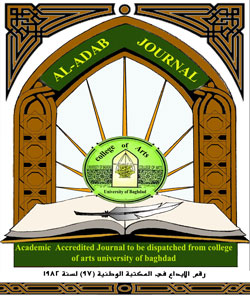Study in the book History of Tabaristan by Ibn Esfandiar
DOI:
https://doi.org/10.31973/aj.v0i134.837Keywords:
Study, Tabaristan, Ibn EsfandiarAbstract
The history of Tabaristan is one of the important works that covered the news of this troubled region, which represented a major challenge to the authority of the Abbasid state, and this book acquires its importance as it talked about the hidden secrets of secrets that relate to Tabaristan and the families that ruled it from the Pound, whose reigns for Tabaristan went back to before Islam. Thus, this book covered two important stages of the history of this region, the first stage before Islam as well as the Islamic stage, which was marked by the arrival of the Alevis to power and their separation from the Abbasid state and the building of an independent state in this region, Ibn Esfandiar talked in details about the Alevi imams, and did not hide his admiration for them, as well as his brief talk about the Bondi family. Accordingly, it can be said that the history of Tabaristan is considered as the most important amongst the works in this regard, as it included a number of works that were absent in the board and had no effect except in this book.
Downloads
References
abn shamayil alqatiei,1991: mirsad alaitilae ,ealaa 'asma' al'amakin, ed1, Beirut, dar aljil
Al-Dawood, Ali, (1995). "Ibn Esfandiar" . dayirat almaearif al'iislamiat alkabraaw tahran , mutabaeat dayirat almieraf al'iislamia
algharifi, muhyi aldyn,(n. d), qawaeid alhudit, Ed1, alnajaf , mutbaeat aladyb
Al-Tabari, Abu Ja`far, Muhammad bin Jarir (d. 310 AH / 922 CE), 1979: History of the Apostles and Kings, e d1, Cairo, Dar Al-Maarif.
Brown, William, 2005: History of Iranian literature, e d1, alqahr, almajlis al'aelaa lilthaqafa.
Christens, Arthur (1982). Iran during the Sassanid era, ... Cairo: the Arab Renaissance House.
Ibn al-Faqih, Abu Abdullah, Ahmad bin Muhammad, 1996: countries, ed1, Beirut, ealam alkutub.
Ibn al-Shamayel al-Qata'I, Abdul Mumin bin Abdul Haq, Mrasad Al-Atala'I, Beirut, Dar Al-Jeel .
Kawtharani, wajih,(2001) alttarikh wamadarisuh fi algharb waeind alearabi, bayrut, dar sadir.
lasataranaj, (1954): buldan alkhilafat alsharqia, ed1, Baghdad, Al-Rabta Press.
The Holy Quran.
Downloads
Published
Issue
Section
License
Copyright and Licensing:
For all articles published in Al-Adab journal, copyright is retained by the authors. Articles are licensed under an open access Creative Commons CC BY 4.0 license, meaning that anyone may download and read the paper for free. In addition, the article may be reused and quoted provided that the original published version is cited. These conditions allow for maximum use and exposure of the work.
Reproducing Published Material from other Publishers: It is absolutely essential that authors obtain permission to reproduce any published material (figures, schemes, tables or any extract of a text) which does not fall into the public domain, or for which they do not hold the copyright. Permission should be requested by the authors from the copyrightholder (usually the Publisher, please refer to the imprint of the individual publications to identify the copyrightholder).
Permission is required for: Your own works published by other Publishers and for which you did not retain copyright.
Substantial extracts from anyones' works or a series of works.
Use of Tables, Graphs, Charts, Schemes and Artworks if they are unaltered or slightly modified.
Photographs for which you do not hold copyright.
Permission is not required for: Reconstruction of your own table with data already published elsewhere. Please notice that in this case you must cite the source of the data in the form of either "Data from..." or "Adapted from...".
Reasonably short quotes are considered fair use and therefore do not require permission.
Graphs, Charts, Schemes and Artworks that are completely redrawn by the authors and significantly changed beyond recognition do not require permission.
Obtaining Permission
In order to avoid unnecessary delays in the publication process, you should start obtaining permissions as early as possible. If in any doubt about the copyright, apply for permission. Al-Adab Journal cannot publish material from other publications without permission.
The copyright holder may give you instructions on the form of acknowledgement to be followed; otherwise follow the style: "Reproduced with permission from [author], [book/journal title]; published by [publisher], [year].' at the end of the caption of the Table, Figure or Scheme.












